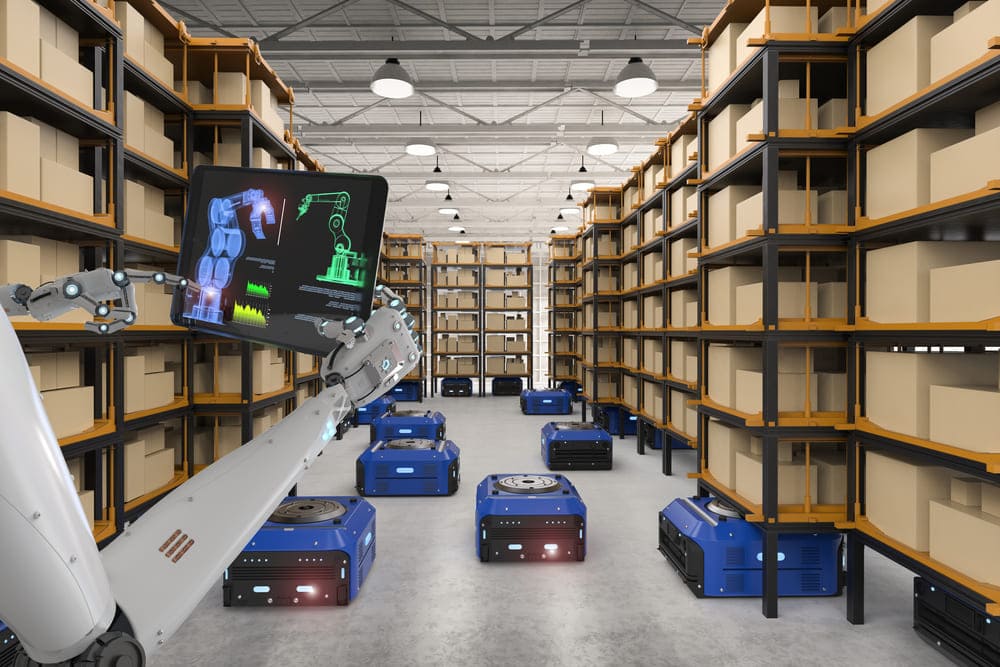As a business owner, you’re probably well aware that nothing impacts customer service and operations like managing inventory. As you grow your business from a small startup to an established company with global ambitions, inventory tracking gets more intricate and complex. Errors and mistakes accumulate exponentially, and, eventually, you find yourself in dire need of technologically advanced inventory management solutions.
In this article, we will discover how to keep track of inventory using the latest technological advancements, and explore the benefits and best practices of using leading edge tech for managing and forecasting inventory. Read on to learn more!
What is inventory management?
The most precise inventory management definition is managing stock and inventory – core elements essential to business. Supervising products from the manufacture to the warehouse, and further on to the stores is an integral part of the inventory management process.
Why is it important to track inventory? Inventory control is a vital aspect of the supply chain and accounts for overall business profitability and success. Failing to strike a balance between incoming and outgoing inventory can seriously disrupt a thriving business.
This balancing act can be tricky – on the one hand, you should have an ample supply of products, especially during peak seasons, on the other – avoid being overstocked. Keeping track of your company’s assets and being aware of their condition enables you to avoid unexpected downtime and expenses.
Common inventory control challenges
According to industry insiders, about 45% of small businesses use manual inventory tracking or no tracking at all. But even large established companies who use some kind of an inventory tracking software, are often struggling to meet these common challenges:
Overstock
Buying stock you can’t sell not only results in it lying idly on warehouse shelves; it creates budget deficits and increases bottom line expenses. The stock you can’t dispose of or return to the seller is written off as a loss. While a certain percentage of losses are normal to every business, at some point it can have a highly disruptive effect.

Stockout
When you’re out of stock, it negatively impacts customer service. Surely, you can mitigate negative consequences by notifying customers about upcoming supply refills, but if this situation happens frequently, you could lose them to other suppliers. Inventory management inevitably impacts customer service and the effect can be detrimental.
Stock spoilage
This is a common challenge for companies that sell perishable items with a limited shelf-life. They have to keep track of expiration dates and make sure they don’t experience critical revenue losses because of depreciated products. In the food industry, for example, controlling the state of stored products is especially important, since the product quality should comply with health regulations and standards.
Storage costs
How much exactly does it cost to store a product? Creating optimal storage conditions, monitoring the products’ state, and renting warehouse facilities are all bottom line expenses impacting the company’s budget. A smart inventory management system can help you estimate the exact storage time for each product and optimize your expenses.
Human error
This mostly concerns companies who still use manual input to track inventory. When it comes to effective inventory management, there are just too many things to take into account. It may seem easy at the initial stage, but as business expands and things get complex, even the best employees can make errors. These errors can cost your business dearly and negatively impact your taxes, deliveries, and your company’s reputation in general.

So how do you know if your legacy inventory management process is in critical need of an update?
In a nutshell, there are three primary indicators:
- You have a vague understanding of your actual stock quantities and have trouble forecasting your inventory needs;
- You are frequently over- or under- stocked;
- You often experience setbacks because of mistakes and fallacies in the inventory database.
Last, but not least – storing your inventory and essentials involves substantial bottom line expenses.
Using technology to track inventory: Benefits and best practices
As businesses expand, executive teams start to realize the importance of adopting smart inventory management solutions. Surely, replacing outdated systems and rethinking legacy processes takes investment and time, but it pays off in the long run by bringing tangible improvements.
More specifically, here’s what you should expect from a good automated inventory management system:
- eliminating over- and under- stock;
- reducing bottom line;
- forecasting demand and planning supply;
- optimizing warehouse processes (including the number of employees and time-to-value);
- real-time stock counts;
- tracking stock across different warehouses;
- excellent accuracy;
- synchronization with other business-critical databases (shipping, payment, accounting, etc).
It also should be accessible from the point of sale (POS) and run not only on PC workstations but also on smartphones and tablets. Let’s now explore some of the best practices for enhancing operations with inventory control technology to illustrate what exactly it can do for your business.

Barcode scanners
Barcode scanners can be used in warehouse inventory control facilitates to manage the movement of stock, when it is checked-in and checked-out. Barcode systems are easy to use: sometimes, a scanner and POS (point of sale) software are all you need to start implementing a barcode-based inventory control system.
How to use barcodes to track inventory is as simple as that: you mark all incoming stock with barcode stickers, and then use the barcode scanner to input the information into an inventory database. Similarly, you use the barcode scanner to check-out the stock when it’s sold or moved to another warehouse. The inventory database then updates automatically.
RFID scanners
RFID is an acronym for radio frequency identification. While, in essence, RFID technology is similar to barcode tracking, it is more advanced: the stock is marked with microchips attached to a radio-antenna instead of barcode stickers. The reception device picks up the signal from all the chips in the given radius simultaneously, so you don’t have to scan all of them separately. The RFID reader is usually located at the warehouse entrance, so all stock is checked in and out of inventory database automatically.
RFID identification also makes it easier to locate products on warehouse shelves and to plan product placements thus saving time and optimizing operations.
Warehouse robots
Robotic technology is also increasingly applied in warehouse management systems, streamlining operations and obviating the need for manual labor. Unlike clumsy and cumbersome robots used in outdated manufacturing facilities, warehouse robots of today are infinitely more intelligent: they use sophisticated navigation and computer vision technology, are powered by AI algorithms, and equipped with sensors and scanners.
Robots are capable of locating, picking and extracting goods from warehouse shelves, and they do it way faster than humans. Naturally, industry giants were the first to augment their operations with robotic technology: Amazon, for example, is using warehouse robots to ensure same-day delivery.
Read more: Streamlining Your Warehouse Management with Digitalization

Smart inventory management software
As companies strive to become data-driven, they aim to adopt IoT and AI-based enterprise software solutions capable of capturing business-relevant data and turning it into valuable insights. Placed inside the warehouse and on products, RFID sensors collect the data and forward it into a smart inventory management app. The software then processes the data, which can be used to forecast inventory, detect bottlenecks, explore business trends, and much more.
Modern warehouse management systems can be integrated with other enterprise databases. This not only helps eliminate discrepancies and fallacies, and keeps all databases up-to-date, but also enables company personnel to focus on tasks that need human intervention instead of routine, rule-based work.
How to improve inventory management: Your first steps
The scope of improvements that smart technology can bring to inventory management is immense; as of today, most business owners realize its true value. Approaching its implementation, on the other hand, may feel like mission impossible. If you’re wondering how to build an inventory management system without disrupting your current operations, a step-by-step approach should work best.
1. Start with the basics
Start optimizing your inventory management process using the tools you have at hand. Even if it’s just a simple Google doc database that your employees manage manually, make sure the stock numbers it contains are up-to-date. Counting and categorizing your assets will also help you estimate your challenges and kick start innovations.
2. Analyze your current bottlenecks and setbacks
Every business has weak spots, depending on its scale and industry of operation. A food company, for example, may suffer losses because of high product spoilage rates. If this is the most critical issue, then implementing warehousing technology to optimize storage conditions should be a priority. List your current challenges and focus on improving the processes that require the greatest amount of your attention.
3. Choose a reliable tech partner
While some companies may be quite happy using ready-made inventory management systems, there are lots of instances where out-of-the-box tools may not apply. Your business may be in need of individual, custom made-solutions to power your inventory and warehouse processes. Choose a reliable tech partner to implement and develop inventory management software and devices tailored specifically for your business.
Need more info? Contact our experts now for an in-depth consultation on augmenting your inventory management with leading edge tech!
Read also:




